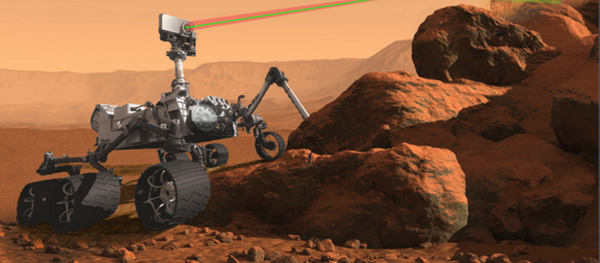Members of the study group are excited that the planet falls within the "habitable zone" and may contain water on the surface. Lead author Guillem Anglada-Escude, an astronomy and physics lecturer at Queen Mary University of London, said in a statement, "We hope these findings inspire future generations to keep looking beyond the stars. The search for life on Proxima b comes next."
For 15 years astronomers have been on an intensive search for planets around Proxima Centauri using equipment like the High Accuracy Radial velocity Planet Searcher (HARPS) and the Ultraviolet and Visual Echelle Spectrograph (UVES), both of which are operated by Chile’s European Southern Observatory.
These instruments allow researchers to detect very slight variances in a star’s movement caused by the gravitational pull of orbiting planets. The first indication of such a change came in 2013, but Anglada-Escude said it wasn’t strong enough to be convincing. He and a group of other researchers initiated an effort to find a planet, The effort, named the Pale Red Dot, is a reference to astronomer Carl Sagan’s description of Earth as a "pale blue dot" and the fact the Proxima Centauri is a red dwarf, a small, dim star.
The Pale Red Dot effort first trained HARPS on the Proxima Centauri star every night from January 19, 2016, through March 31, 2016. They also pored over previous studies using HARPS data from 2005 through early 2014 and UVES data from 2000 through 2008, after which they concluded that there was an undeniable signal of a planet.
After an analysis of the star’s brightness from other telescopes, Anglada-Escude and his team ruled out the likelihood that the signal originated from a change in Proxima Centauri’s activity. At a press conference on Tuesday Anglada-Escude said, "The conclusion: We have found a planet around Proxima Centauri."
In a study published online Wednesday, researchers explained how Proxima b went unnoticed for so long, when exoplanets that are much farther away have been discovered.
"The uneven and sparse sampling, combined with the longer term variability of the star, seem to be the reasons why the signal could not be unambiguously confirmed with pre-2016 data, rather than the total amount of data accumulated," they said.
Data gleaned from UVES and HARPS indicates that Proxima b is about 1.3 times larger than Earth. The new planet completes one orbit every 11.2 Earth days and sits about 4.7 million miles from its host star. Because of this, it’s possible that Proxima b is tidally locked to the star, meaning it always faces its host star, much like the Earth’s moon shows one side to the Earth.
It is not known whether the new planet can sustain life, and powerful flares emanating from Proxima b make astronomer Artie Hatzes less than optimistic. "Energetic particles associated with the flares may erode the atmosphere or hinder the development of primitive forms of life," he wrote, "We also don't know whether the exoplanet has a magnetic field, like Earth, which could shield it from the dangerous stellar radiation."
Pete Worden, chairman of the Breakthrough Prize Foundation, told reporters on Wednesday, "Over the next decade, we will work with experts here at ESO and elsewhere to get as much information as possible about the Proxima Centauri planet, perhaps as noted, even including whether it might bear life, prior to launching mankind's first probe towards the star," he said, adding, "We also hope to obtain similar data about the other nearby stars, Alpha Centauri A and B."







